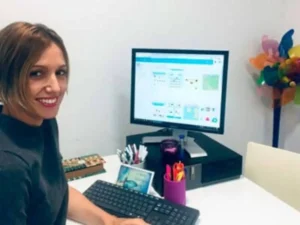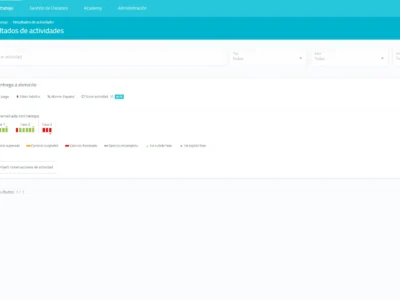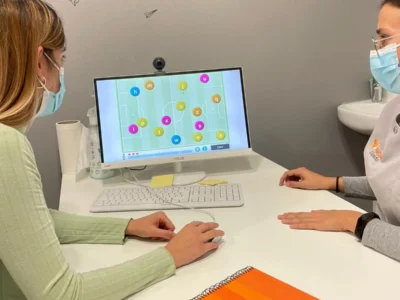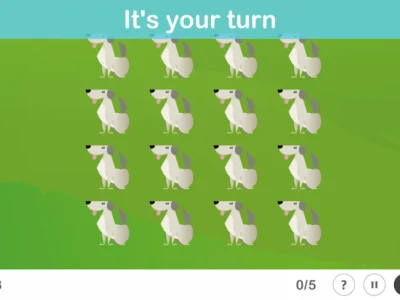The neuropsychologist specializing in childhood and adolescence at UDAC-CTI Elche, M. Carmen Moreno Blasco, and the pediatric neurologist and centre coordinator, Dr. Ángela Sempere, explain how to carry out a psychoeducational intervention for ADHD with NeuronUP.
The work of the Centre de Teràpia Interfamiliar
From CTI, Centre de Teràpia Interfamiliar, we want to emphasize the importance of each child having all the necessary resources at their disposal to achieve better personal and social development. That is why, from our centre, we try to address in a transdisciplinary manner (psychologists, speech therapists, occupational therapists, psychiatrists and pediatric neurologists) the developmental, behavioral or emotional difficulties that appear in children, always together with the family and the school, essential allies in the therapy of the child with difficulties.
In our daily work, we diagnose and treat children who present developmental delays or difficulties, language difficulties, autistic symptoms, attention and hyperactivity difficulties, giftedness and/or behavioral or emotional problems.
All these children receive a neuropediatric and/or psychiatric assessment, ruling out organic causes; they are evaluated by neuropsychology, speech therapy and/or occupational therapy, a diagnosis is made and within our unit they are referred to the most appropriate professional.
Empowering the family
Intervention with the family is fundamental for our team. For this reason, we advocate a family-centered model, carrying out more and more interventions in the childs home and empowering the family as a fundamental part of the intervention. At the same time, there is continuous coordination and advisory support with schools to jointly address the child’s needs, attempting to generalize the objectives achieved across different contexts.
The importance of diagnosis in ADHD intervention
Today, one of the diagnoses we most frequently make in the clinic is Attention Deficit Hyperactivity Disorder (ADHD), affecting up to 5-8% of the child population. It is a disorder of neurobiological basis, involving dopaminergic and noradrenergic circuits of the brain, essential for maintaining our executive functions.
Executive functions
Some of the main and most important executive functions are the following:
- Reasoning: being able to use different pieces of information and see possible connections between them, as well as develop possible explanations.
- Planning: allows us to develop action plans, generate a series of steps that will lead us to a specific goal.
- Goal setting: a motivation-linked ability that helps us decide what to choose, how to invest our energies and where to direct our behaviors.
- Decision making: enables us to determine which option to choose among the many that may be presented to us.
- Starting and finishing tasks: both starting tasks and finishing an action involve an important Cognitive Activity.
- Organization: the ability to gather and structure information efficiently and usefully.
- Inhibition: one of the most relevant functions. An ability that allows us to regulate our actions by stopping behavior. It enables us to resist specific impulses, cease an action, and prevent irrelevant information from interfering with our behavior.
- Monitoring: the ability to maintain attention on the task and regulate what and how we are doing what we are doing.
- Verbal and non-verbal working memory: the ability to store information so that the subject can operate with it later, both verbally and non-verbally.
- Anticipation: the ability to foresee in advance the results of an action and its Consequences.
- Flexibility: allows us to change our way of acting or thinking in the face of possible environmental changes or modify Actions in progress.
ADHD symptoms
Dopaminergic and noradrenergic circuits are involved in these functions, and when they fail they lead to a cognitive and behavioral problem; ADHD is defined by the presence, to a greater or lesser degree, of the following symptoms:
- Attention deficit: they avoid doing tasks that require sustained mental effort. They find it hard to concentrate, get distracted easily, make mistakes due to these lapses, have difficulty organizing themselves, leave tasks unfinished and lose or forget necessary objects.
- Hyperactivity: they can’t stay still, don’t know how to play quiet games, fidget in their seat, and talk continuously.
- Impulsivity: they respond hastily, interrupt and don’t know how to wait their turn.
Treatment of ADHD
The treatment of a child with ADHD depends on the severity and characteristics of each child. A proper psychoeducational intervention in ADHD is always recommended, together with the family and school approach. In children with greater impairment, whether cognitive, behavioral or emotional, we will indicate an appropriate pharmacological treatment.
Psychoeducational intervention in ADHD
It is in the psychoeducational intervention for ADHD where platforms like NeuronUP help us make the intervention with these children more motivating for them, achieving a better control of symptoms and a greater success in treatments.
Cognitive stimulation through the computer with playful activities is increasingly appealing to them. We observe that both children in whom inattention predominates and those in whom hyperactivity and impulsivity predominate are able to work for longer periods without us detecting signs of attentional decline nor loss of interest in tasks.
Likewise, on a motor level, they seem to be able to better control their restlessness when carrying out tasks on the computer.
Conclusions about ADHD intervention with NeuronUP
NeuronUP has made our cognitive stimulation work much easier through its online platform for ADHD intervention.
We create individual profiles for each of our children, with their name and password, where we select the activities we want to carry out based on the areas to be worked on in each session: executive functions, attention, memory, processing speed, planning, etc., among others.
In this way, the results of each area worked on are recorded in the individual profile, allowing us to monitor the child’s progress in each area and verify the effectiveness of the intervention in children with ADHD.
Without a doubt, it has been a great success for us to work with NeuronUP, for the stimulation of cognitive functions, as well as to train social skills and work on activities of daily living. And not forgetting the most important thing, that it is through play that we achieve the greatest engagement and motivation of the youngest.
If you liked this post about the psychoeducational intervention in ADHD, you may also be interested in other posts on NeuronUP:
“This article has been translated. Link to the original article in Spanish:”
La intervención psicoeducativa en personas con TDAH






 10 Cognitive Rehabilitation Activities for Children with ADHD
10 Cognitive Rehabilitation Activities for Children with ADHD
Leave a Reply